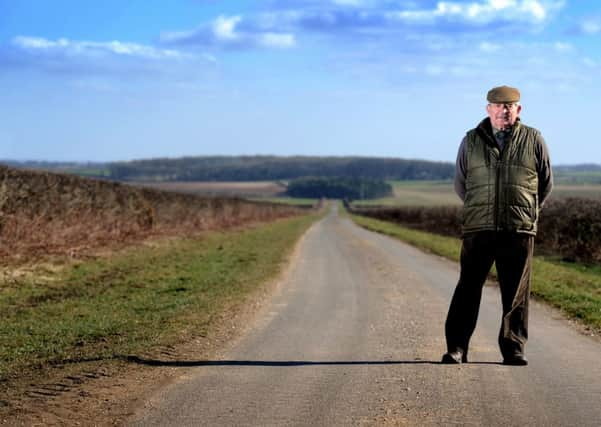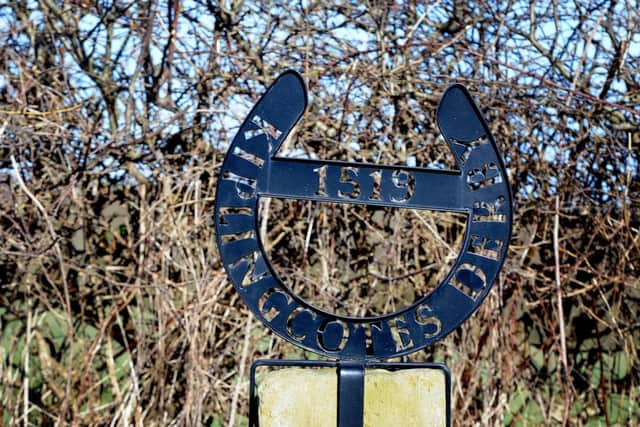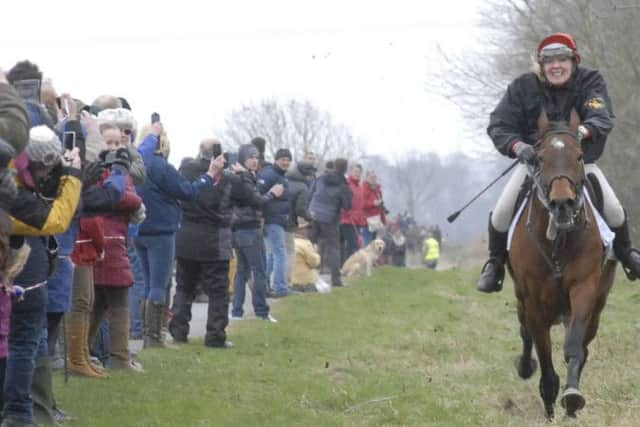Back in the saddle at England’s oldest horse race


Starting just outside the village of Etton and finishing at Londesborough Wold, it’s a flat race run over open country that is unique in many ways and
Guy Stephenson’s family has been involved for generations as the final surge for the winning post is alongside their farm.
Advertisement
Hide AdAdvertisement
Hide AdIf you’ve never been before here is what to expect. There will probably be around thirteen to fifteen runners, although nobody ever knows until the morning of the race because there are no formalised entries.


All you have to do is simply turn up on the day – at the winning post, yes you read that correctly – and weigh-in before 11am. No formal licence or qualifications are needed, just a horse. Every rider must be a minimum weight of 10 stones and if you’re not then you must carry weights to achieve the minimum.
The only adjudicator is the clerk of the course, who stays at the winning post and checks the weights of the winner and second place to ensure that you’ve not thrown any out along the way.
At 11.30am the clerk reads the rules (or at least some of them as there are many) and then all competitors walk their horses the four and a half miles to the start.
Advertisement
Hide AdAdvertisement
Hide AdThis is a race that actually fits the literal description of what you might have expected of a point to point, as it starts at one point and largely runs in a straight line. The course sees the horses run along a wide grass verge starting near to the old Kiplingcotes railway station, crossing country lanes, a bridge over the disused railway line and the A163 road from Shiptonthorpe to Middleton-on-the-Wolds, before passing the thin white winning post breathless, muddy and in some cases mightily relieved. It’s a tricky and at times treacherous course that was originally intended as a true test of a horse.


“It’s become really popular again since we’ve had a bit of TV coverage,” said Guy, who is one of the trustees along with William Bethel, Philip Guest and Milo Manton.
“There’s a crowd of about 500 at the winning post. There are not so many down at the start and in all the years I’ve been involved with it I’ve never been there when they’ve set off but overall I’d say we have probably over 1000 watching the race.
“It is now ridden under Jockey Club rules and we even have a bookie once again. We didn’t have one for a number of years but this will be Chris Johnson’s third year. It must be tricky for him because he has very little form to go on as these are generally not horses you will see running anywhere else.
Advertisement
Hide AdAdvertisement
Hide Ad“When Chris decided to come we had to get a bit more organised so we bought some saddle cloths with numbers on so that means there is at least some form of identification for him and those backing the horses. My advice is that if you want to win it, you must have a thoroughbred. You’re not going to stand much of a chance with anything else.”
The Stephenson family has had its own share of success in the race over the years since the family arrived at Londesborough Wold.
“My father and his brothers won in 1936 and 1937 on Sporting Chance; and in 1941 and 1942 on Sandy,” Guy said. “My two brothers also won. Andrew won three years in a row riding Wold Flyer in 1953, 54 and 55; and Derek twice consecutively in 1958 and 59.”
When Guy’s daughter Clare was still at home, her horse Baby Rat won in 1982. There’s a good reason for the name.
Advertisement
Hide AdAdvertisement
Hide Ad“Baby Rat belonged to singer Frankie Vaughan and was so called because he was with the Water Rats Society. We had local man Brian Tinson ride for us. Brian went on to win twice more in 1985 and 1987. We’ve won twice with horses that we owned but normally those that win are ridden by their owners. Tracy Corrigan of Driffield is the current champion, until Thursday. She won last year on her mount Willy.”
One of the quirks of the race is that second place gets a monetary prize of £4 per entry in the race. As the winner only receives £50 there are times when the number of entries can bring about a larger sum for coming second.
“That happened to us one year,” said Clare. “Our horse came in second and there were 23 entries. We came away with over £80 - but nobody wants to come second.”
The interest in the race has brought about runners and visitors from far and wide.
Advertisement
Hide AdAdvertisement
Hide Ad“We had some who came up from Cambridge last year and we regularly get a good following from Wakefield. There’s a bus load that come from a pub in Dunswell, between Hull and Beverley every year. They bring their own refreshments but we also have my brother Stuart and his wife Helen who own The Gait Inn in Millington who come down and provide refreshments too. They are sponsors of the race also.”
In the past decade only one male rider has won, although he has done it four times.
John Thirsk rode Maisie to victory three years on the trot, but other than that the winner has been female with six different riders.
Who will win this year? Your best bet would be to get over to Londesborough Wold on Thursday morning, find out and be a part of this historic race.
Kiplingcotes Derby fact file
Advertisement
Hide AdAdvertisement
Hide AdReputedly started in 1519, Kiplingcotes Derby became endowed in 1619.
According to tradion, the race has to be run between 12 noon and 1pm.
The large stone that marks the starting point now has a large decorative horseshoe above marked Kiplingcotes Derby that was made by local blacksmith Nick Moor of Market Weighton.
The first lady rider to win was Miss Jean Farrow in 1939 on Masterful.
Advertisement
Hide AdAdvertisement
Hide AdThe only rider to win the race 10 times is Ken Holmes who won his first race in 1983 on Onward Again. His last winner was in 2002 on Monty. He is also the only rider to have won four times in a row when completing this feat from 1992 – 1995 on the same horse Tulum.